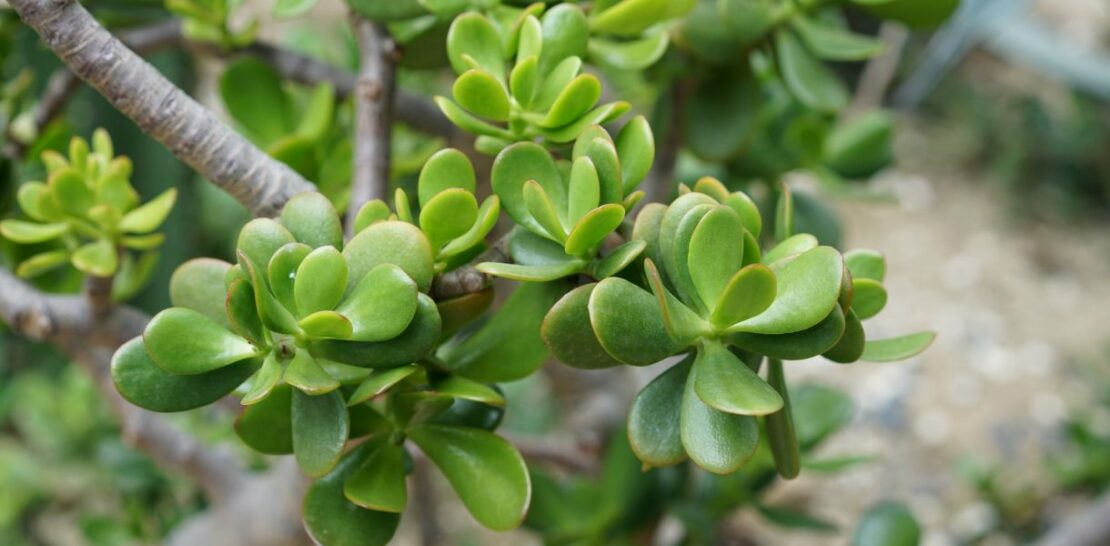As a symbol of prosperity and good fortune in many cultures, the jade tree is an ideal plant for those looking to infuse their living space with positive energy.
In this comprehensive guide, we will explore the intricate world of jade trees, unraveling the mysteries behind planting, nurturing, and maintaining these beautiful plants.
From understanding the origins of this resplendent tree to mastering the art of jade tree care, this article will provide you with all the knowledge and tools necessary to ensure your jade tree flourishes for years to come.
Delving into the Origin and Characteristics of the Jade Tree
Before delving into the specifics of jade tree cultivation, it is essential to understand the origins and characteristics of this extraordinary plant.
The jade tree, scientifically known as Crassula ovata, is a succulent native to South Africa and Mozambique. It has gained popularity across the globe due to its low maintenance requirements, stunning appearance, and auspicious symbolism. Also known as the “money plant” or “lucky plant,” the jade tree is believed to attract wealth and prosperity in many cultures. Belonging to the Crassulaceae family, the jade tree is characterized by its thick, fleshy leaves and sturdy trunk. In their natural habitat, jade trees can grow up to 3 meters (10 feet) tall. However, when grown indoors, they usually reach a height of around 1 meter (3 feet).
Planting Your Jade Tree: The Basics
Now that we have a solid understanding of the jade tree’s origin and characteristics, let’s delve into the basics of planting your own jade tree.
- Choosing the right container: Selecting the proper container for your jade tree is crucial for its healthy growth. Opt for a container with ample drainage holes to prevent waterlogging and root rot. A ceramic or terra cotta pot works best due to its porous nature, allowing excess moisture to escape. Make sure the container is large enough to accommodate your jade tree’s growth while also providing stability to prevent toppling.
- Preparing the soil mix: Jade trees thrive in well-draining soil, similar to what they would experience in their natural habitat. A mixture of 3 parts potting soil, 2 parts coarse sand, and 1 part perlite is ideal for jade trees. This combination ensures proper drainage while also providing enough nutrients for the plant’s growth. You can also use a store-bought succulent mix as a suitable alternative.
- Planting the jade tree: Fill your chosen container with the prepared soil mix, leaving a few inches of space at the top. Gently remove your jade tree from its current container and carefully shake off any excess soil from the roots. Position the jade tree in the center of the new container and spread the roots out evenly. Fill the remaining space around the roots with soil, ensuring the base of the trunk remains slightly above the soil line. This prevents any moisture from accumulating around the trunk, minimizing the risk of rot.
- Watering after planting: It is essential to give your newly planted jade tree a thorough watering to help it settle in its new environment. Pour water on the soil until it begins to drain from the bottom holes. Once the water has drained completely, do not water the jade tree again for at least another week. This allows the roots to recover from any potential damage sustained during the planting process.
Nurturing Your Jade Tree: Light, Water, and Temperature Requirements
To ensure that your jade tree thrives, it is essential to provide it with the ideal conditions for growth. In this section, we will explore the light, water, and temperature requirements needed for a flourishing jade tree.
- Light: Jade trees require bright, indirect light to grow and maintain their vibrant foliage. They can tolerate direct sunlight for a few hours each day, but prolonged exposure can scorch the leaves and cause irreversible damage. Place your jade tree near a south or west-facing window to provide the ideal light conditions. If you live in a region with limited sunlight, consider supplementing natural light with a grow light to ensure your jade tree receives the necessary light for optimal growth.
- Water: One of the most critical aspects of jade tree care is proper watering. As a succulent, jade trees store water in their leaves and require less frequent watering than other plants. In general, it is best to allow thesoil to dry out completely between waterings to prevent overwatering and root rot. When you do water your jade tree, make sure to water it thoroughly, allowing the excess water to drain from the bottom of the pot. It is essential to avoid letting your jade tree sit in standing water, as this can lead to root rot. During the winter months, when the plant is in a dormant state, you should reduce the frequency of watering even further to avoid excess moisture.
- Temperature: Jade trees prefer a consistent temperature between 18-24°C (65-75°F). They can tolerate temperatures as low as 10°C (50°F) during their dormant period in winter, but prolonged exposure to cold temperatures can cause damage to the plant. It is crucial to protect your jade tree from drafts, cold windows, and sudden temperature fluctuations, as these can stress the plant and inhibit its growth. If you live in a region with extreme temperature variations, consider moving your jade tree to a more sheltered location or providing additional insulation to maintain a stable temperature.
Advanced Jade Tree Care: Pruning, Fertilizing, and Pest Control
With a solid understanding of the basic requirements for jade tree cultivation, it is now time to explore some advanced care techniques to ensure your jade tree reaches its full potential.
Pruning: Pruning is an essential aspect of jade tree care, as it promotes healthy growth and maintains the plant’s attractive appearance. To prune your jade tree, use a clean, sharp pair of pruning shears or scissors to remove any dead, damaged, or diseased branches. Also, trim back any branches that are becoming too long and leggy to encourage a more compact, bushy growth habit. The best time to prune your jade tree is during its active growing season, typically in the spring or summer months.
Fertilizing: While jade trees can survive in nutrient-poor soil, providing them with additional nutrients can promote healthier, more robust growth. During the active growing season (spring and summer), apply a balanced, water-soluble fertilizer diluted to half strength every four to six weeks. Be sure to water your jade tree thoroughly before and after fertilizing to prevent fertilizer burn. It is essential to avoid over-fertilizing, as this can lead to excessive growth and weaken the plant’s structure.
Pest Control: Like all plants, jade trees can occasionally fall victim to pests such as mealybugs, spider mites, and scale insects. To prevent infestations, regularly inspect your jade tree for any signs of pests and remove them promptly. In most cases, wiping the affected areas with a cloth or cotton swab dipped in rubbing alcohol can effectively remove these pests. Additionally, ensure that your jade tree has proper air circulation and is not overcrowded with other plants, as this can create an environment conducive to pest infestations. If necessary, you can also use a mild insecticidal soap or neem oil to treat persistent pest problems.
Through diligent care and attention to detail, you can create the optimal environment for your jade tree to thrive. By understanding the plant’s origin, characteristics, and basic care requirements, you will be well-equipped to nurture and maintain a beautiful, healthy jade tree. As you become more adept at jade tree care, incorporating advanced techniques such as pruning, fertilizing, and pest control will further enhance your plant’s growth and vitality. With patience, dedication, and the knowledge gained from this comprehensive guide, you can unlock the secrets to a flourishing jade tree and enjoy the prosperity and positive energy it brings to your living space.




